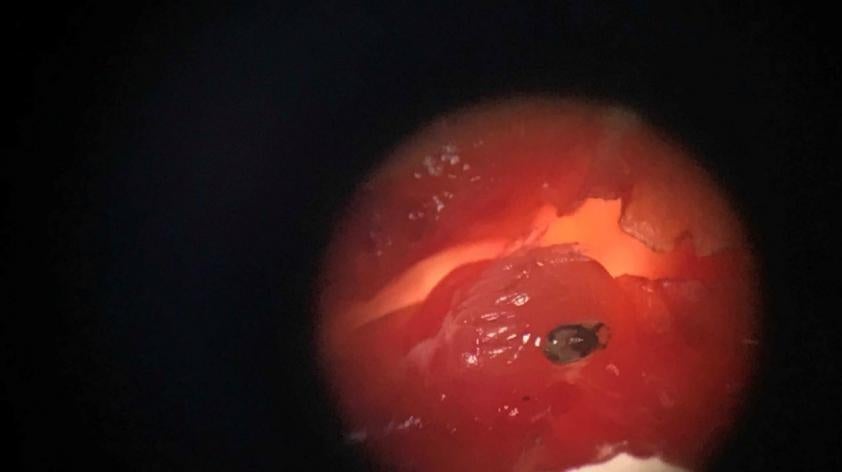
Parasites: our freeloading “friends”
These creatures may hang out in our guts, crawl on our skin, or embed themselves in our organs. Many world travelers fall victim to these tiny foes while traveling in less familiar lands. Who are these creatures I speak of? Parasites! And you may think they only lurk in remote places on the earth, but here at San Diego Zoo Global’s Disease Investigations Lab, they are frequent visitors.
What is a parasite?
Parasites are organisms that require another species, i.e. a host, in order to survive and ultimately reproduce. By attaching themselves to a host species, whether it be externally or internally, the parasite can feed and extract nutrients (at the expense of the host), and begin its reproductive cycle.
Parasite life cycles can be simple or very complex, requiring different hosts for different stages of parasite development. Each component must be present in order to complete the life cycle, and with numerous life stages and potential hosts and intermediate hosts, it is amazing to think how such complex systems evolved and continue to be successful!
Where do they come from and why do we care?
Parasites are found worldwide, carried by their hosts and constantly being shed into the environment. Some are more difficult to get rid of than others.
For example, when parasite eggs are shed in feces, rapid fecal pick up is required to prevent environmental contamination – a significant challenge given the extensive naturalistic and open enclosures at the Safari Park!
For most animals, some degree of parasitism is a fact of life, and the goal for maintaining healthy captive populations is to keep the problem parasites in check.
To this end, when we in Disease Investigations are preforming necropsies (post mortem exams), we routinely check each animal for parasites both inside (e.g. intestinal worms) and outside (e.g. ticks) the body.
Often, we can see parasites with our naked eyes, but some are too small and can only be seen under magnification with a microscope.
In every case, must we document where the parasite is found on the body and describe the appearance, size, and quantity. Identifying key characteristics can help us categorize the parasite further; for instance, is the worm flat or round? Or how many legs does that crawling thing have? It is important for us to record, describe and archive the parasites that we find in order to better understand how they may affect the animals’ health.
We save many parasites we find at necropsy in 70% reagent grade alcohol for identification and possible future studies.
It is important to remember that not all parasites are considered bad, but every animal can be a potential host for a range of parasites.
Interestingly, we sometimes find parasites in an abnormal hosts. A parasite that may be non-life threatening in its natural host species may be fatal if it infects an aberrant host species. Therefore, we try to limit these interactions as much as possible!
When we find parasites at necropsy, we report them to the clinical veterinarians and animal care staff who are responsible for any medical treatments or prevention strategies that need to be implemented or adjusted to keep our animals healthy.













